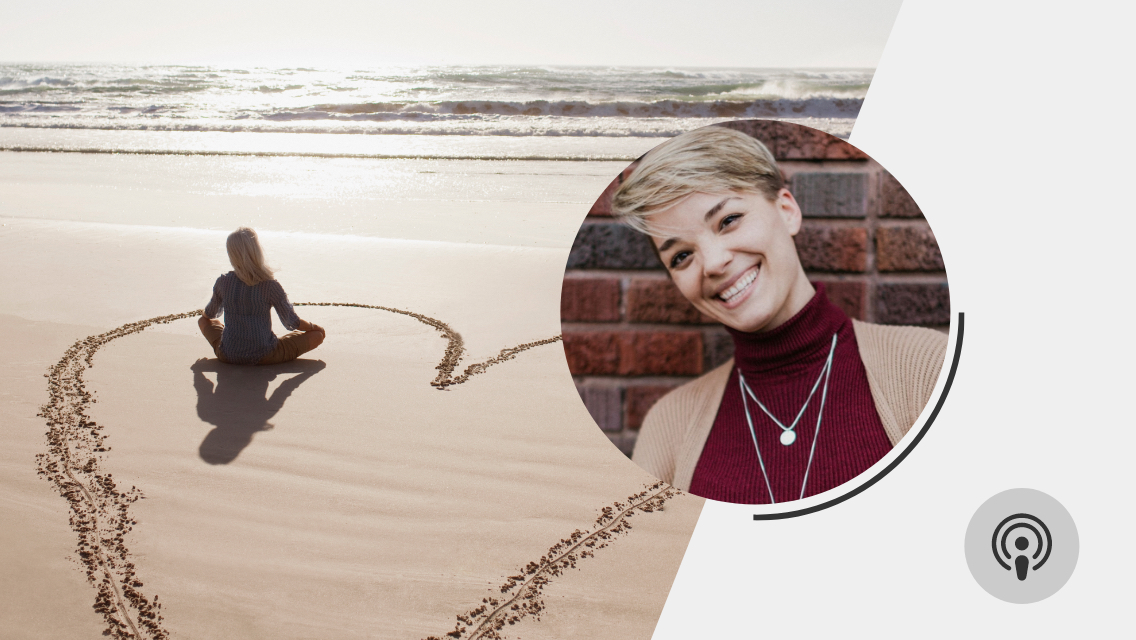You don’t often hear people described as permeable, but we are. Just like the rest of the natural world, we breathe, we eat, we suffer injuries and illness, and we heal. In nature, you don’t see healthy organisms wall themselves off from their surroundings — at least not for long. It’s the constant give and take that makes life possible.
Our emotional lives are similar. We are not designed to be impenetrable fortresses or to shut ourselves down and avoid difficult emotions indefinitely. Yet we all do this from time to time, and some of us may even make it a way of life.
We do this unconsciously, usually when we feel hurt, scared, or betrayed. Closing off may even be a healthy reaction when we’re overwhelmed by stimuli, or when someone is being hurtful toward us.
The point is that it’s OK to shut down sometimes, just not for too long. If we try to protect ourselves from uncomfortable feelings by closing ourselves off permanently, it ends up hurting us more. It makes it impossible to let in more excitement, joy, and other positive emotions.
Think of the permeability of photosynthesis: how a tree’s leaves take in carbon dioxide and water, transform it into oxygen, and then release it back into the air. This is how they breathe and grow.
When we embrace our permeability, we allow ourselves to feel a more dynamic range of emotions. We may feel more intense sadness, but we may experience more intense joy as well.
As we learn to let in and process the full spectrum of emotions, we can absorb what serves us and release what doesn’t. We can also learn to be more intentional about what we offer and how we affect the world around us.
Vulnerable vs. Permeable
Vulnerability and permeability are not the same thing. When we overshare to disguise our vulnerability, as some of us are prone to do, our worries about not being accepted often prevent us from recognizing the effect our words and energy have on others. We might not hear what they have to say or notice their expression.
In this mostly one-way interaction, we’re letting a lot out but not letting anything in. This can be nerve-racking because we don’t know how we’re being received. We might feel like we just laid our fears and dreams on the table to be dissected and criticized.
The concept of permeability offers a more even ground for exchange. It also gives us options beyond clamming up or spilling our guts. Permeability creates a space for exchange.
As permeable beings, we take in both the good and the bad in our surroundings. We are also able to release whatever comes at us. We can let life move through us without holding on too tightly. We’re not walled off, nor are we passive recipients of whatever comes our way.
We’re part of the whole arrangement, with our own role to play in giving and receiving. We can be more deliberate and thoughtful about the ways we show up in the world.
Intentional Systemic Mindfulness
As most of us know, repressed emotions don’t conveniently disappear. They circle inside us, affecting our health and our relationships. An approach called intentional systemic mindfulness allows us to readjust those feedback loops to support self-regulation.
This model involves setting intentions for improving our health through mindfulness, with the understanding that we are permeable creatures connected with the larger world around us. It might seem like a subtle shift from self-regulation, goal setting, or mindfulness practices, but bringing more awareness and purpose to the “why” and “how” of our lifestyle changes can help set us up for success.
For example, let’s say that our intention is to lose our temper less often. One way we might accomplish that is by attending to others with the mindfulness quality of lovingkindness. When we attend to someone with love, we don’t respond with rage when they insult us. The experience moves through our system, and we release the negativity; it does not get stuck or congested the way it does when we attend to someone with distrust or hate. In effect, we’re able to keep cool more easily.
Permeability is not only our natural state; it is a tool we can use to improve our world. Within our own bodies and between all systems, things are in constant exchange. Being receptive is more difficult when we’re dealing with negative emotions and experiences, but it’s important to remember that what we let in doesn’t define us. It does not constitute who we are — it is simply how we experience the world. And we can control how we process our emotions and experiences (what we let in), as well as how we react to them (what we let out).
Let It All In, Let It All Out
So how do we come to terms with the fact that being open and permeable means that we will encounter more intense joy but also more intense sadness? The great poet Rainer Maria Rilke suggests remembering that nothing lasts forever. His advice:
“Let everything happen to you: beauty and terror. / Just keep going. No feeling is final.”
None of us will ever be able to create a world for ourselves that’s easy every minute of the day. We can, however, decide to give and receive as much as we’re able in the time that we have.
Don’t push away the stuff that makes you feel bad. And don’t hold too tightly to the stuff that makes you feel good. Just allow it all to be there. Inhale, then exhale. Let it all in, and then let it all go.







This Post Has 0 Comments